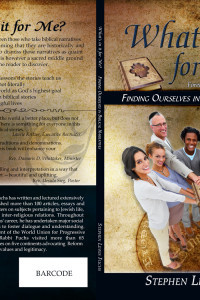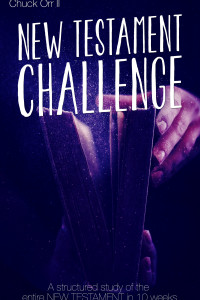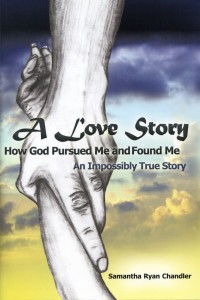Jennifer Ball
Mar 25, 2016 | Religious, 1st pages

She was thirteen years old in the summer of 2012 when her family went on their traditional family trip to Daytona Beach. It was traditional in the sense that they went a minimum of four times a year. Any time the entire family had time off to travel, they went to the other coast of Florida for a few days. Unknown to her, it would be the last family trip to Daytona Beach.
Her mom was celebrating the big ‘4-0’ on this trip. She always made all the family plans. It wasn’t something she liked to control; it was more something that brought her excitement than a control factor. Her mom wasn’t raised in a close-knit family herself, so family time and memories was such a joy to her. Daytona Beach was her Mom’s favorite place to bring the family. A few years back, she had found the perfect hotel and it had been the regular place for them ever since. It was a five-star Hilton directly on the beach.
To save money on valet for more fun activities for the trip, Dad would drop them off at the hotel then drive a few blocks away
to overnight parking. She and her older sister would wait in the lobby while her overexcited mom would negotiate the best room with the front desk attendant. It always had to overlook the ocean.
Walking like she was on a mission, Mom came back and said,
“Okay, girls we got it! The best room!” as if she didn’t remember that she said that about the last room they had. The two sisters and Mom grabbed all they had, which consisted of not only luggage, but lawn chairs, inner tubes, and a cooler, and headed for the elevator. Mom would text Dad the room number. She, like her mom, couldn’t wait until everyone had their bathing suits on so they could head to the beach. Her older sister showed no emotion.
Stephen Lewis Fuchs
Mar 24, 2016 | Religious, 1st pages

Introduction
The world today is seemingly divided when it comes to understanding the Bible. Religious fundamentalists hold that every word re ects unerring historical truth, while skeptics see biblical stories as little more than fairy tales. This book rejects both approaches. Rather, we view the Genesis and Exodus narratives as valuable instruction. Their truth is neither literal nor historical, but moral and ethical. Finding “truth” in a biblical narrative is akin to finding truth in a poem.
What does that mean? Let us say I am walking through a beautiful garden with my beloved on a gorgeous, warm spring afternoon. Overwhelmed by her beauty, I gaze at her and sigh, “Your eyes are two beautiful pools…” This does not mean I propose to dive in and take a swim, nor am I lying. I am, in fact, expressing a truth that rises from the very depth of my soul. I am presenting an accurate description of how my beloved makes me feel (Leonard Gardener et al., Genesis: The Teacher’s Guide, New York: The United Synagogue Commission on Jewish Education, 1966, pp. 18-19). We turn to the Torah for enlightenment or personal guidance rather than lessons in science or history.
Torah is a Hebrew word that means “instruction” or “learning.” It is a word that we understand in two ways: In its narrow sense, the Torah is the rst ve books of the Hebrew Bible: Genesis, Exodus, Leviticus, Numbers, and Deuteronomy. In a broader sense, though, the word Torah represents all of Jewish learningall of the accumulated wisdom and teaching that through the ages, the Jewish people have contributed to bene t the entire world.
What’s in It for Me? xiii
Henry H Harris
Mar 22, 2016 | 1st pages, Religious, Spiritual

Chapter 1: A Voice from the Wilderness
A voice cries out: “Clear a path in the wilderness. Make a straight highway in the desert for our God. Let every valley be filled and every mountain and hill be made flat. Let the crooked places be made straight and the rough places smooth. Then the glory of the Lord will appear for all to see. The Lord himself has promised this.”
—Isaiah 40:3–5
Spring–Autumn, AD 29
A religious stupor rests upon the land. Seven centuries have passed since the prophet Isaiah predicted a voice would call from the wilderness to prepare Israel for the Lord’s arrival. Most people believe the old prophecies shouldn’t be taken literally, but some still look with prayerful anticipation toward the desolate lands west of the Salt Sea, where the prophets said a new exodus will begin. “I will lead her into the wilderness and speak tenderly to her there,” the Lord told Hosea. “I will make the valley of trouble into a door of hope.”
This is a tremendous promise, but hundreds of generations have come and gone, and only the names of the oppressors have changed. “How long, oh Lord?” is the question on the lips of many as the poor become poorer and the weak become helpless. Recently there have been reports from the Jordan River of a Nazarite hermit who is reviving interest in the old predictions and announcing the arrival of the Messiah. “Repent,” John bar Zechariah demands, “for the kingdom of heaven is at hand.”
Like the prophets before him, his counsel is blunt: prepare to meet your God—He will be here soon. To the poor, who are convinced that only the Lord can deliver them from their hopeless situation, John’s news is encouraging. To others, his words sound more like a warning. Maybe even a threat. John’s appearance is as startling as his message. He’s in his early thirties, but years in the desert have weathered him. His dark skin is cracked and leathery, his beard is long and matted, and his hair is uncut and cascades down his back in thick coils. His body, lean from a diet of honey and locusts, is clothed in a coarse camel-hair cloak that is cinched at his waist with a leather tie.
Chuck Orr II
Mar 17, 2016 | Religious, 1st pages
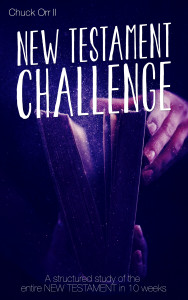
CHAPTER ONE
Welcome.
Thank you for picking up (and more importantly, opening) a copy of the New Testament Challenge.
You are ready to embark on a journey that could change your life.
You are on the verge of doing something most Americans value so highly they want to do more of it themselves. According to a recent Barna poll, 80% of Americans believe the Bible is sacred and 61% wish they read the Bible more.
You are choosing to invest your time and energy in a pursuit that holds great promise for every facet of human existence.You are invited to take part in a demanding, rewarding study of the lives and ministry of Jesus and his disciples. Opening this book is one way to make a disciplined start toward accepting
Chuck Orr. NT Challenge (Kindle Locations 55-62).
Samantha Ryan Chandler
Mar 11, 2016 | Religious
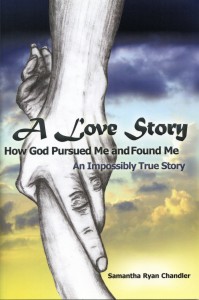
I begin to write my story with the ending unknown. All I do know is that I am a child of God, and I win. I am certain that when I am heading to a finish, God will have restored me to victory. It is His promise. It is His job.
I grew up in a very small town in the middle of Nowhere, Louisiana, to a pagan mother and a former-altar-boy-in-the-Catholic-religion father. God did not live in our home, nor was He invited in. My mother was quite abusive, and my father lived in the land of denial. My father’s mom was in love with Jesus, but spoke almost no English, only French. My Irish grandparents adored me, but they were unaware of anything religious.
As a young girl, I heard ghastly stories of my mom and her antics. She had more than likely been the most beautiful woman in her Irish enclave of a village, but she had the soul of the wicked. The stories I heard were beyond frightening.
In her youth, she “worked a spirit table.” This meant that several people would put their hands on the table and ask it questions. Answers came through an alphabet formed by how many times the table would rock or move. Participants even bragged about contacting a deceased spirit and gaining information that, when checked against local city records, turned out to be true.
John Eugene Miller
Mar 11, 2016 | 1st pages, Memoir, Religious

In order to go on any journey you need three important tools:
1. A destination
2. A map
3. A compass
The destination is unveiled in the title of the book—our goal is to find the center of the heart. That simply means searching for that thing that God designed for you to accomplish while you carry out your life on earth.
On the journey to find the center of your heart, your map is the word of God. The Word tells us if we delight in God that He will give us the desires of our heart.
I once thought that if I gave my heart to God that He would have me go somewhere I did not want to go, and do something that I did not want to do. I found out that following God’s plan for my life led precisely to the opposite of what I expected.
As a matter of fact, I could not even find my heart’s desire until I gave my heart to Him. The reason is that God put those desires deep down into my heart and only He could help me find and follow those desires.
Finally, on the journey to find the center of the heart you need a guide or compass—and I found out that is the role of the Holy Spirit of God. The presence of God in Spirit who would lead, guide and direct me even when my life got off track due to my bad decisions.
An important part of the map for this journey is found in Psalms 37:1-7. Four significant trail markers are in this passage.



